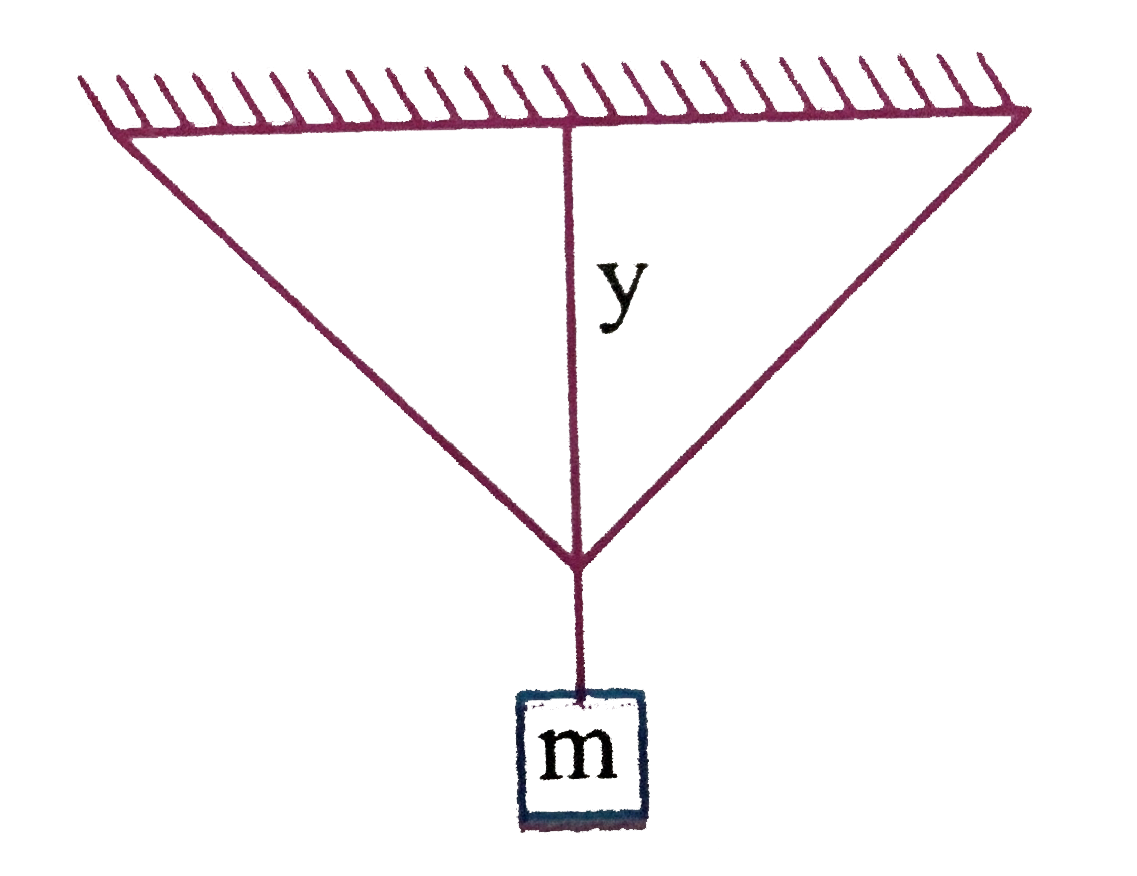Three copper wires of length and cross-sectional areas are (L,A)(2L,A2),(L/2,2A), resistance is
minimum in wire of cross-sectional area A2
minimum in wire of cross-sectional area A
minimum in wire of cross-sectional area 2A
same in all three cases
The correct Answer is:C
l1=L,A1=A
l2=2L,A2=A2
R1R2=l1l2×A2A1⇒R3<R1<R2
Topper's Solved these Questions
- CURRENT ELECTRICITYBook:BITSAT GUIDEChapter:CURRENT ELECTRICITYExercise:Bitsat Archives
Explore 26 Videos
- CATHODE RAY, PHOTOELECTRIC EFFECT AND X-RAYSBook:BITSAT GUIDEChapter:CATHODE RAY, PHOTOELECTRIC EFFECT AND X-RAYSExercise:BITSAT Archives
Explore 6 Videos
- ELECTRIC CAPACITORBook:BITSAT GUIDEChapter:ELECTRIC CAPACITORExercise:BITSAT archives
Explore 6 Videos
Similar Questions
Knowledge Check
There are three copper wires of length and cross-sectional area (L,A),(2L,A/2)(L/2,2A). In which case in the resistance minimum?
Ait is the same in all three casesBWire of cross-sectional are 2ACWire of cross-sectional area ADWire of cross-sectional are 12AA copper wire of length 2m and area of cross-section 1.7×10−6m2 has a resistance of 2×10−2ohms. Calculate the resistivity of copper.
A1.7×10−8B1.7×10−9C1.7×10−10D1.7×10−11A steel wire fo length 5m and cross-sectional area 2×10−6m2 streches by the same amount as a copper wire of length 4m and cross sectional area of 3×10−6m2 under a given load. The ratio of young's mouduls of steel to that of copper is
A8:15B15:8C5:3D3:5
One end of a Nichrome wire of length 2L and cross-sectional area A is attatched to an end of another Nichrome wire of length L and cross-sectional area 2A. If the free end of the longer wire is at an electric potential of 8.0 volts, and the free end of the shorter wire is at an electric potential 1.0 volts, the potential at the junction of the two wires is equal to
View SolutionA body hangs form the mid-point of a light wire of length 2l and cross-sectional area A such that the wire sags through a verticle distance (y<<l). If the youngs's modulus of the wire is Y.

What is the elastic energy stored?
View SolutionA metal wire of length L1 and area of cross-section A is attached to a rigid support. Another metal wire of length L2 and of the same cross-sectional area is attached to free end of the first wire. A body of mass M is then suspended from the free end of the second wire. If Y1andY2 are the Young's moduli of the wires respectively, the effective force constant of the system of two wire is
View SolutionIf breaking stress of a wire of length L and radius of cross-section r is P N/m2, then breaking stress of wire of same material of length 2 L and radius of cross section (r/2) will be
View SolutionA conductor of length l and area of cross-section A has a resistance R then its specific resistance is
View Solution

